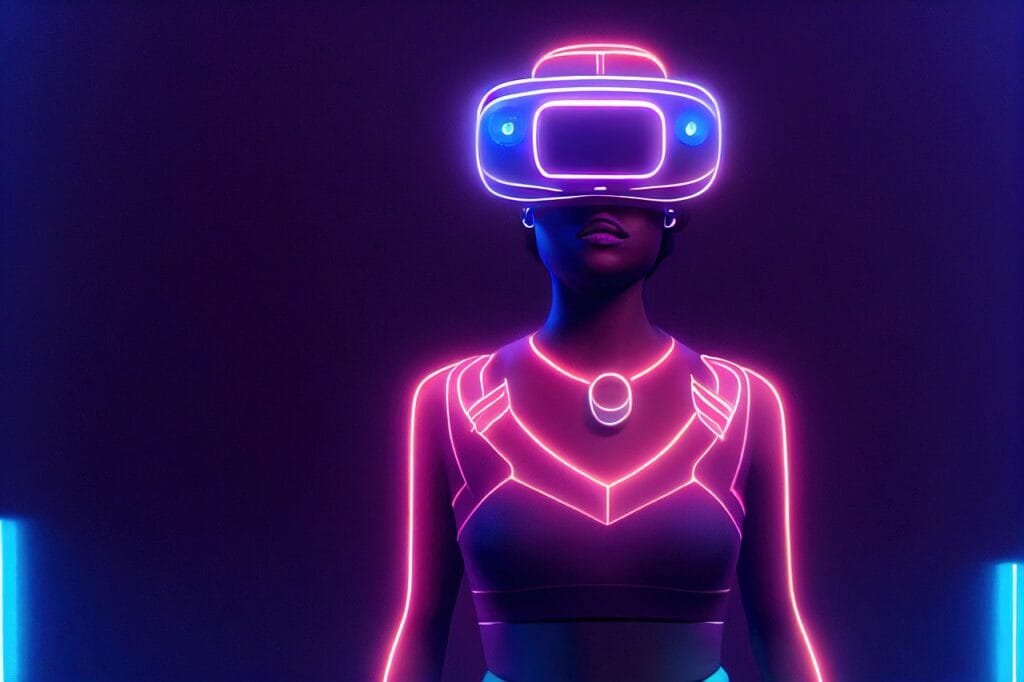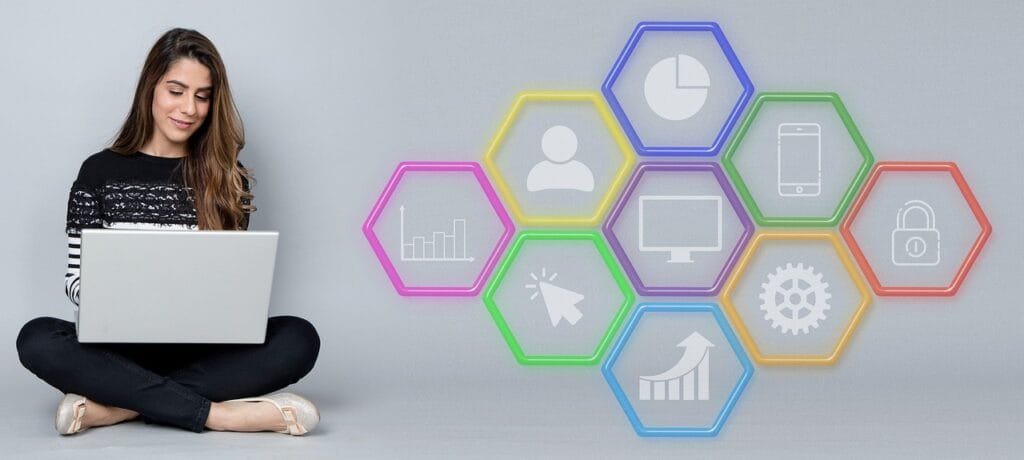This Article has been revised, edited and added to, by Poulomi Chakraborty.
- Understanding Virtual Reality in the Travel Realm
- SEO Implications for the VR-Driven Travel Industry
- Changing Search Behavior and Keyword Evolution
- Enhancing Visual Content for Better Engagement
- Leveraging Local SEO with Virtual Previews
- Technical SEO Considerations for VR Content
- Feedback Loops and User Experience Metrics
- Local SEO and VR: The New Power Duo
- The Power of Virtual Previews
- Local Landmarks as Virtual Gateways
- Local Events and VR Showcases
- Optimizing for VR-Centric Local Searches
- Integrating Reviews and User Generated Content
- Challenges and Solutions
- The Future of VR in Travel SEO
- The Integration of Social Media and VR in Travel
- Innovative VR Marketing Techniques Influencing SEO
- Challenges and Solutions for VR-Driven Travel SEO
- Beyond VR: The Emergence of Mixed Reality (MR) in Travel
- Conclusion
In recent years, Virtual Reality (VR) has rapidly evolved from a novelty concept into a transformative tool across multiple industries. Among the sectors most significantly impacted by VR is the travel and tourism domain. With immersive experiences offering potential travelers glimpses into destinations before physically visiting them, the dynamic of planning and executing travel has changed. This shift has far-reaching implications for Search Engine Optimization (SEO) strategies within the travel industry. Let’s delve into how VR and travel SEO are interconnected, the emerging trends, and the future prospects of this powerful combination.
Understanding Virtual Reality in the Travel Realm

Virtual Reality, often abbreviated as VR, is not merely about gaming or cinematic experiences. It’s a revolution that bridges the gap between physical presence and digital exploration. For the travel industry, this bridge has presented an opportunity to reshape and redefine the way people perceive and experience travel.
A Deep Dive into VR Tourism
The crux of VR tourism lies in its ability to transport users to a virtual version of real-world locations. These experiences are crafted using 360-degree videos, photographs, and sometimes, sophisticated 3D models. By donning a VR headset, individuals can explore everything from the bustling streets of New York City to the serene beaches of Bali – all from the comfort of their homes.
The VR Experience Spectrum
Not all VR experiences are the same. They vary in terms of immersion and interaction:
- Passive Experiences: These are akin to watching a movie, but in 360 degrees. For example, a virtual scenic helicopter ride over the Grand Canyon.
- Interactive Experiences: Here, users can engage with their surroundings. This might involve “walking” through a virtual museum and being able to “click” on artifacts to learn more about them.
- Full Immersive Experiences: These utilize hand controllers and sensors to allow users to move and interact with their virtual environment freely, offering the most comprehensive VR experience.
The Role of VR in Pre-Trip Planning
One of the most significant aspects of VR in travel is its role in pre-trip planning. A decade ago, travelers relied on brochures, websites, and perhaps some videos. Today, they can take a virtual stroll around a hotel, inspect the room, view the amenities, or even experience some of the activities the destination has to offer. Such interactions make the decision-making process not only more informed but also more exhilarating.
Empowering Informed Choices
VR addresses one of the fundamental challenges faced by travelers: uncertainty. What does the destination really look like? Is the hotel room as spacious as it appears in photos? By offering a realistic, immersive preview, VR dispels doubts, thereby driving more confident booking decisions.
SEO Implications for the VR-Driven Travel Industry

As the travel industry marries Virtual Reality to its offerings, the digital landscape and its optimization strategies are undergoing a seismic shift. Understanding these changes is vital for businesses to ensure their virtual offerings are both seen and experienced by potential customers.
Changing Search Behavior and Keyword Evolution
The introduction of VR in travel has spurred a new range of search queries. Users are now more likely to search for phrases like “best virtual tours of Rome” or “360-degree view of Mount Everest base camp.” This emerging trend implies that travel platforms must continuously update their keyword strategies to accommodate these evolving search patterns.
Enhancing Visual Content for Better Engagement
- VR Content Quality: In the realm of VR, content is more than king; it’s the entire kingdom. Low-resolution or poorly stitched VR experiences can be jarring and unengaging. Travel businesses must ensure their VR content meets the highest quality standards to retain user interest and reduce bounce rates – a critical metric for SEO.
- Descriptive and Contextual Information: While VR can provide a rich visual experience, accompanying textual content is equally vital. Accurate and engaging descriptions, contextualizing the VR content, can enhance user understanding and increase the time spent on the site – another crucial SEO factor.
Leveraging Local SEO with Virtual Previews
Local businesses, especially in tourism hotspots, can hugely benefit from VR. For instance, a local café in Paris could offer a virtual tour of its interiors, its views of the Eiffel Tower, or even a 360-degree experience of a live music night. These VR experiences, combined with local SEO strategies, can significantly boost visibility and footfall.
Technical SEO Considerations for VR Content
- Website Load Times: VR content, given its rich and data-heavy nature, can impact website loading speeds. Slow websites are penalized by search engines. It’s imperative to optimize VR content, perhaps by using efficient codecs or compressing data, to ensure quick load times.
- Mobile Optimization: As many users may access VR content via mobile VR headsets or even simple Google Cardboard setups, ensuring VR experiences are optimized for mobile is critical. A mobile-friendly VR interface can significantly enhance user experience and, by extension, SEO rankings.
Feedback Loops and User Experience Metrics
The more users interact and engage with VR content, the more data businesses can gather. Metrics such as interaction rates, duration of VR experiences, and points of user drop-offs can provide valuable insights. These metrics not only help improve the VR content itself but also act as indicators for search engines about the content’s relevance and quality.
Local SEO and VR: The New Power Duo
The convergence of Local SEO and Virtual Reality is like the coming together of two superheroes, each amplifying the other’s strengths. Especially for businesses rooted in physical locations, this fusion has the potential to reshape their digital outreach and customer engagement strategies.
The Power of Virtual Previews
Before setting foot in a new place, travelers often rely on online reviews, images, and recommendations. VR takes this a step further. Imagine a boutique hotel in Santorini offering a virtual tour of its rooms, showcasing the stunning sea views from the balcony, or a local café in Tokyo giving a 360-degree sneak peek of its Sakura-themed interiors during cherry blossom season. These virtual previews can:
- Instill Trust: A virtual tour is more authentic and less likely to be manipulated than photos, making it a powerful trust-building tool.
- Drive Conversions: Immersive experiences can evoke emotions, making potential customers more likely to convert.
Local Landmarks as Virtual Gateways
Small businesses situated near popular tourist landmarks can use VR to showcase not only their offerings but also the appeal of the surrounding area. For example, a bookstore near the Notre Dame could offer a VR experience of a quiet reading corner with the cathedral in the background, enticing both book and history lovers.
Local Events and VR Showcases
Local festivals, farmers’ markets, and other events can be promoted through VR, providing potential attendees with a taste of what to expect. This fusion of local SEO and VR can draw global attention to local events, boosting tourism and local business revenues.
Optimizing for VR-Centric Local Searches
With the rise of VR tourism, there’s an uptick in searches like “VR tour of Central Park cafes” or “virtual walk through London’s Covent Garden.” Local businesses must identify these emerging search terms and optimize their content accordingly.
Integrating Reviews and User Generated Content
User reviews have always been a cornerstone of Local SEO. By integrating user-generated VR content or reviews within the virtual experience, businesses can further amplify trust and authenticity. A diner could, for instance, view a virtual tour of a restaurant while simultaneously browsing through customer reviews and user-uploaded VR clips of their favorite dishes.
Challenges and Solutions
While the potential is vast, the amalgamation of Local SEO and VR is not without challenges:
- Keeping Content Updated: VR content needs to be frequently updated to reflect changes in the local setting or business offerings. Regularly updated content is also favored by search engines.
- Accessibility and Compatibility: Ensuring the VR experience is accessible across devices, especially mobiles, and is compatible with various VR headsets is crucial for user experience and SEO alike.
The Future of VR in Travel SEO

The continuous evolution of technology ensures that the digital landscape is always in flux. The introduction of Virtual Reality to the world of travel has already been transformative, but what does the future hold? Let’s explore the potential trajectories and advancements that could further shape this domain.
The Emergence of Augmented Reality (AR) in Travel
While VR completely immerses users in a digital environment, AR overlays digital information on the real world. This can be particularly useful for travelers:
- Live Tours with AR Overlays: Imagine strolling through the ruins of Rome, with AR providing real-time information about each monument, or wandering through a market in Bangkok with AR suggesting local delicacies to try.
- Localization of AR Content: Content could adapt based on the traveler’s language preferences, dietary restrictions, or interests, making experiences personalized and more engaging.
Hyper-Personalization through AI Integration
As Artificial Intelligence becomes more sophisticated, it’s likely to play a significant role in enhancing VR experiences:
- Tailored VR Tours: Based on a user’s browsing history, likes, and previous travel experiences, AI can curate personalized VR tours. If someone enjoyed vineyard tours in France, they might be recommended a virtual tour of vineyards in Tuscany.
- Predictive Analytics: AI could predict emerging travel trends, helping businesses create VR content that caters to forecasted demands, ensuring they stay ahead in the SEO game.
Enhanced Interactivity with Haptic Feedback
Haptic technology, which relates to the sense of touch, could bring a new dimension to VR. Feeling the texture of a carpet in a Moroccan bazaar or the cool breeze of a beach in Bali during a virtual tour could make experiences even more immersive, increasing user engagement and, consequently, SEO value.
Blurring the Boundaries with Mixed Reality (MR)
Mixed Reality combines elements of both VR and AR. In the context of travel, MR might allow users to virtually place themselves in a hotel room and then digitally interact with real-world elements, like opening a window to view the landscape or checking the comfort of the bed.
Seamless Integration of Voice Search
Voice search is on the rise, especially in mobile scenarios. Future VR travel platforms might integrate voice commands, allowing users to navigate, ask questions, or make bookings without lifting a finger. This would further change the SEO landscape, with a growing need to optimize for voice-based queries.
Environmental and Sustainable Impacts
As sustainability becomes a growing concern, VR might be touted as an eco-friendly alternative to excessive travel. This could see a rise in VR-based “staycations,” where users explore the world virtually, reducing their carbon footprint.
The Integration of Social Media and VR in Travel

Social media has revolutionized the way we share and consume travel experiences. With the rise of VR, this sharing has become more immersive, transforming the way audiences engage with travel content and influencing their travel decisions.
Social VR Platforms: A New Meeting Ground
Emerging platforms are blurring the lines between social media and VR:
- Virtual Hangouts: Apps like Facebook Horizon or VRChat allow users to meet in virtual spaces, travel together, and share experiences. For instance, a group could meet up virtually to explore a digital replica of Machu Picchu.
- Event Livestreams: Festivals, concerts, or local events at popular destinations could be streamed live in VR. Users from around the world can join these events, getting a taste of the destination’s culture.
Influencers and VR: A New Age of Travel Blogging
The travel influencers of the future may not just share photos or videos but offer followers VR experiences:
- Immersive Travelogues: Think of a travel vlogger sharing a VR recording of their trek through the Amazon rainforest, allowing followers to virtually walk alongside them.
- Sponsored VR Content: Brands might partner with influencers to create tailored VR experiences. A scuba gear brand, for instance, could sponsor an influencer’s virtual dive in the Great Barrier Reef.
Sharing and Discovering VR Content on Established Platforms
Mainstream platforms like Facebook, Instagram, and YouTube now support 360-degree content:
- Interactive Posts: Instead of just viewing a picture of a beach, followers can experience a 360-degree sunset, looking around as if they were there.
- Geo-tagging in VR: Uploading VR content with location tags can boost local businesses. A tagged VR post of a café in Paris might lead users to virtually visit, and later, physically drop by.
Engagement Metrics and Insights for Businesses
- VR Analytics: Just as businesses monitor likes, shares, and comments, VR interactions – such as the duration of views, points of interest, or interactivity within a VR experience – will be vital metrics.
- Feedback in Real-Time: Platforms might allow users to leave comments or emojis within the VR experience, providing instant feedback. If multiple users leave a heart emoji around a particular scenic viewpoint, it’s a clear indicator of audience preference.
The Viral Potential of Shareable VR Moments
Just as a picturesque travel photo can go viral, VR experiences that resonate with audiences have the potential to spread rapidly. A unique, captivating VR moment – say, standing atop Mount Everest or witnessing the Northern Lights – could be shared across platforms, amplifying visibility and driving engagement.
Innovative VR Marketing Techniques Influencing SEO

Interactive Virtual Reality Ad Campaigns
Forward-thinking travel companies are integrating interactive VR advertisements into their marketing strategies. These ads, which offer brief yet immersive destination experiences, can significantly boost click-through rates, driving traffic and improving search rankings.
User-generated VR Content
Encouraging users to create and share their VR content can provide authentic experiences for potential travelers. Search engines value this fresh, user-generated content, often rewarding platforms that encourage such interactions with better rankings.
Challenges and Solutions for VR-Driven Travel SEO
Social media has revolutionized the way we share and consume travel experiences. With the rise of VR, this sharing has become more immersive, transforming the way audiences engage with travel content and influencing their travel decisions.
Social VR Platforms: A New Meeting Ground
Emerging platforms are blurring the lines between social media and VR:
- Virtual Hangouts: Apps like Facebook Horizon or VRChat allow users to meet in virtual spaces, travel together, and share experiences. For instance, a group could meet up virtually to explore a digital replica of Machu Picchu.
- Event Livestreams: Festivals, concerts, or local events at popular destinations could be streamed live in VR. Users from around the world can join these events, getting a taste of the destination’s culture.
Influencers and VR: A New Age of Travel Blogging
The travel influencers of the future may not just share photos or videos but offer followers VR experiences:
- Immersive Travelogues: Think of a travel vlogger sharing a VR recording of their trek through the Amazon rainforest, allowing followers to virtually walk alongside them.
- Sponsored VR Content: Brands might partner with influencers to create tailored VR experiences. A scuba gear brand, for instance, could sponsor an influencer’s virtual dive in the Great Barrier Reef.
Sharing and Discovering VR Content on Established Platforms
Mainstream platforms like Facebook, Instagram, and YouTube now support 360-degree content:
- Interactive Posts: Instead of just viewing a picture of a beach, followers can experience a 360-degree sunset, looking around as if they were there.
- Geo-tagging in VR: Uploading VR content with location tags can boost local businesses. A tagged VR post of a café in Paris might lead users to virtually visit, and later, physically drop by.
Engagement Metrics and Insights for Businesses
- VR Analytics: Just as businesses monitor likes, shares, and comments, VR interactions – such as the duration of views, points of interest, or interactivity within a VR experience – will be vital metrics.
- Feedback in Real-Time: Platforms might allow users to leave comments or emojis within the VR experience, providing instant feedback. If multiple users leave a heart emoji around a particular scenic viewpoint, it’s a clear indicator of audience preference.
The Viral Potential of Shareable VR Moments
Just as a picturesque travel photo can go viral, VR experiences that resonate with audiences have the potential to spread rapidly. A unique, captivating VR moment – say, standing atop Mount Everest or witnessing the Northern Lights – could be shared across platforms, amplifying visibility and driving engagement.

Related: Check out our free SEO suite

Beyond VR: The Emergence of Mixed Reality (MR) in Travel
Mixed Reality (MR) blends the physical world with digital elements, creating an immersive experience that goes beyond what Virtual Reality (VR) offers. For startups in the travel industry, embracing MR can provide a unique competitive edge. This technology enables users to interact with digital content in a real-world context, offering unparalleled engagement opportunities. Understanding its potential means recognizing MR as not just a novelty but as a tool that can reshape customer experiences, marketing strategies, and the very fabric of travel services.
Strategic Implementation of MR for Enhanced Customer Experience
Incorporating MR into your business strategy requires a thoughtful approach. Start by identifying the touchpoints where MR can significantly enhance the customer experience. For instance, consider interactive guides that overlay information directly onto the physical surroundings through smart glasses or mobile devices. This can transform standard tours into dynamic, personalized experiences.
Further, integrating MR into the booking process can revolutionize how customers select their travel options. Imagine customers exploring hotel rooms or vacation rentals in MR before making a reservation, giving them a more accurate feel for their choices. This level of interaction can significantly increase confidence in booking decisions, leading to higher satisfaction and reduced rates of cancellation.
Leveraging MR for Marketing and Brand Differentiation

In a crowded market, differentiation is key. MR offers a powerful way to stand out, providing tangible experiences that can be shared across social media platforms. Creating memorable, shareable MR experiences can elevate your brand, drawing attention in a way that traditional advertising cannot.
Collaborate with content creators and influencers to showcase your MR experiences. This not only increases your reach but also adds credibility to your offerings. Additionally, use MR to tell stories that connect with your audience on an emotional level. For example, historical tours using MR can make history come alive, creating a profound connection with the destination.
Strategic Partnerships for Expanding MR Offerings
Developing MR experiences can be resource-intensive. To overcome this, seek strategic partnerships with technology providers, local attractions, and cultural institutions. These partnerships can lead to the development of unique content that enhances your MR offerings, making them more attractive to users.
Moreover, collaborate with local governments and tourism boards. They may offer grants or support for projects that leverage technology to enhance tourism. This not only helps in offsetting costs but also aligns your business with broader efforts to innovate in the travel industry.
Analyzing Data for Continuous Improvement
MR experiences generate vast amounts of data, from user interactions to engagement rates. By analyzing this data, you can gain insights into what works and what doesn’t, allowing you to continuously refine your offerings. Pay attention to user feedback and usage patterns to identify areas for improvement or expansion.
Use A/B testing for different MR features to understand better what enhances the user experience. This data-driven approach ensures that your MR offerings remain relevant, engaging, and ahead of industry trends.
Future-Proofing Your Business with MR
As MR technology evolves, staying ahead of the curve is crucial. Keep abreast of technological advancements and explore new ways to integrate them into your services. By doing so, you not only future-proof your business but also establish yourself as a leader in the integration of technology in travel.
Investing in MR is not just about adopting new technology; it’s about envisioning the future of travel. For startups looking to make a mark in the travel industry, MR offers a pathway to creating distinctive, immersive, and memorable experiences that can captivate travelers in the digital age. Embrace MR strategically, and you can transform the way people explore the world.
Conclusion
Virtual Reality is undeniably reshaping the travel landscape, offering unprecedented experiences to potential travelers. As the bridge between VR and travel continues to strengthen, understanding its implications for SEO becomes paramount for industry players. By staying ahead of these trends and proactively adapting, businesses can leverage the power of VR to optimize their online visibility, user engagement, and overall success.
The fusion of Virtual Reality and SEO in the travel industry is a testament to the ever-evolving digital age. While challenges exist, the potential for creating deeply engaging, immersive experiences for travelers is unparalleled. As technology continues to evolve, those in the travel industry must remain adaptable, ensuring their SEO strategies are always one step ahead, ready to harness the latest innovations to their advantage.
Read Next
- Developing a Content Strategy for Travel SEO
- Best CMS Platforms for SEO-Friendly Travel Websites
- A/B Testing Tools for Conversion Rate Optimization
- Using Google Search Console for Travel Websites
- Google Analytics for Travel and Hospitality: A Guide




















Comments are closed.